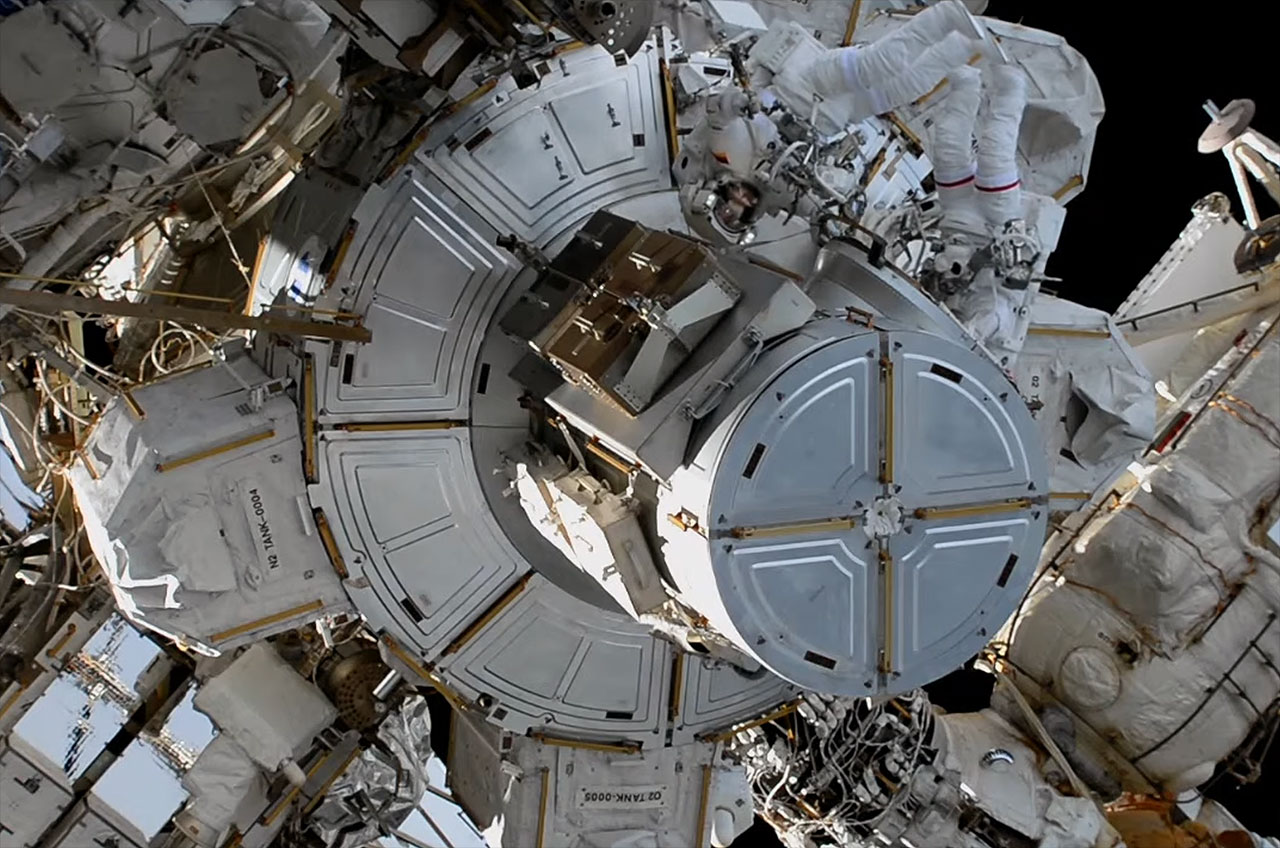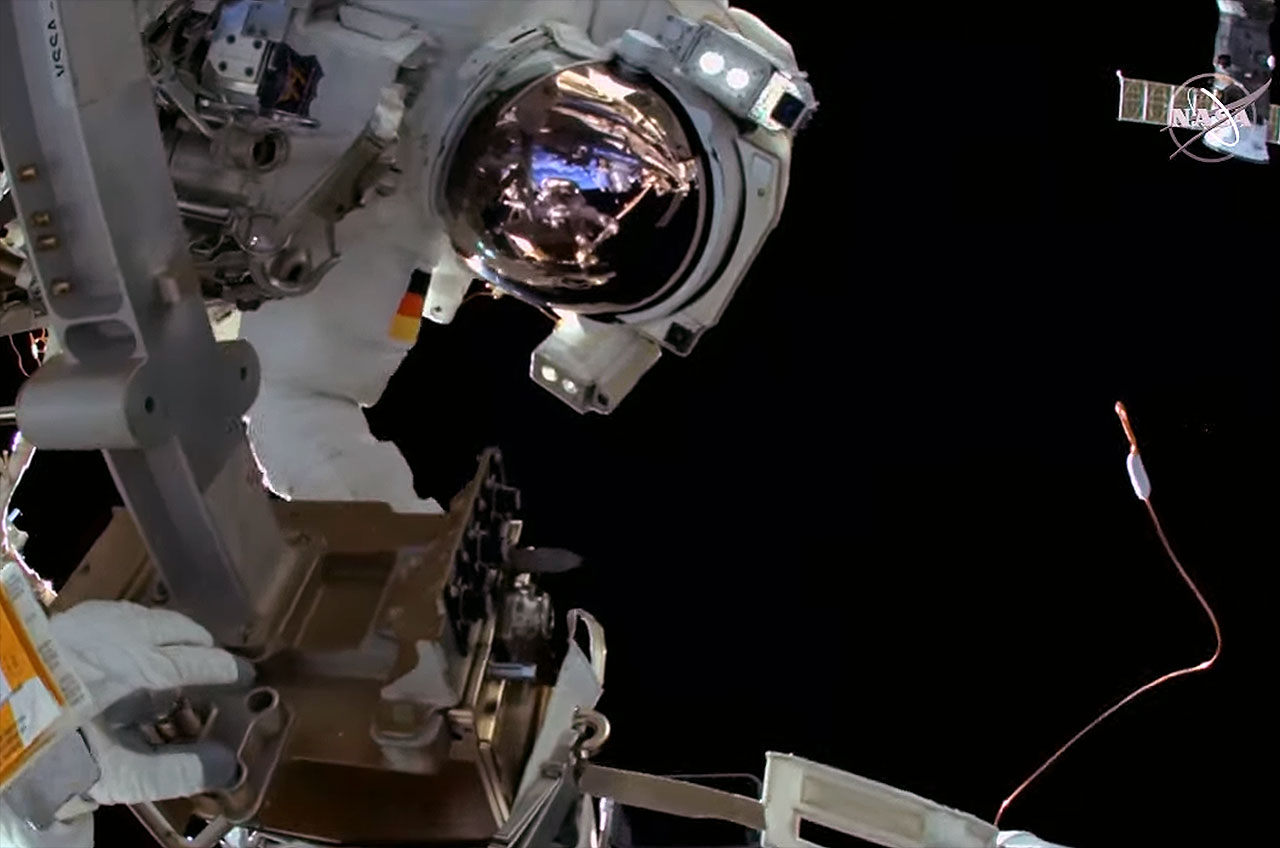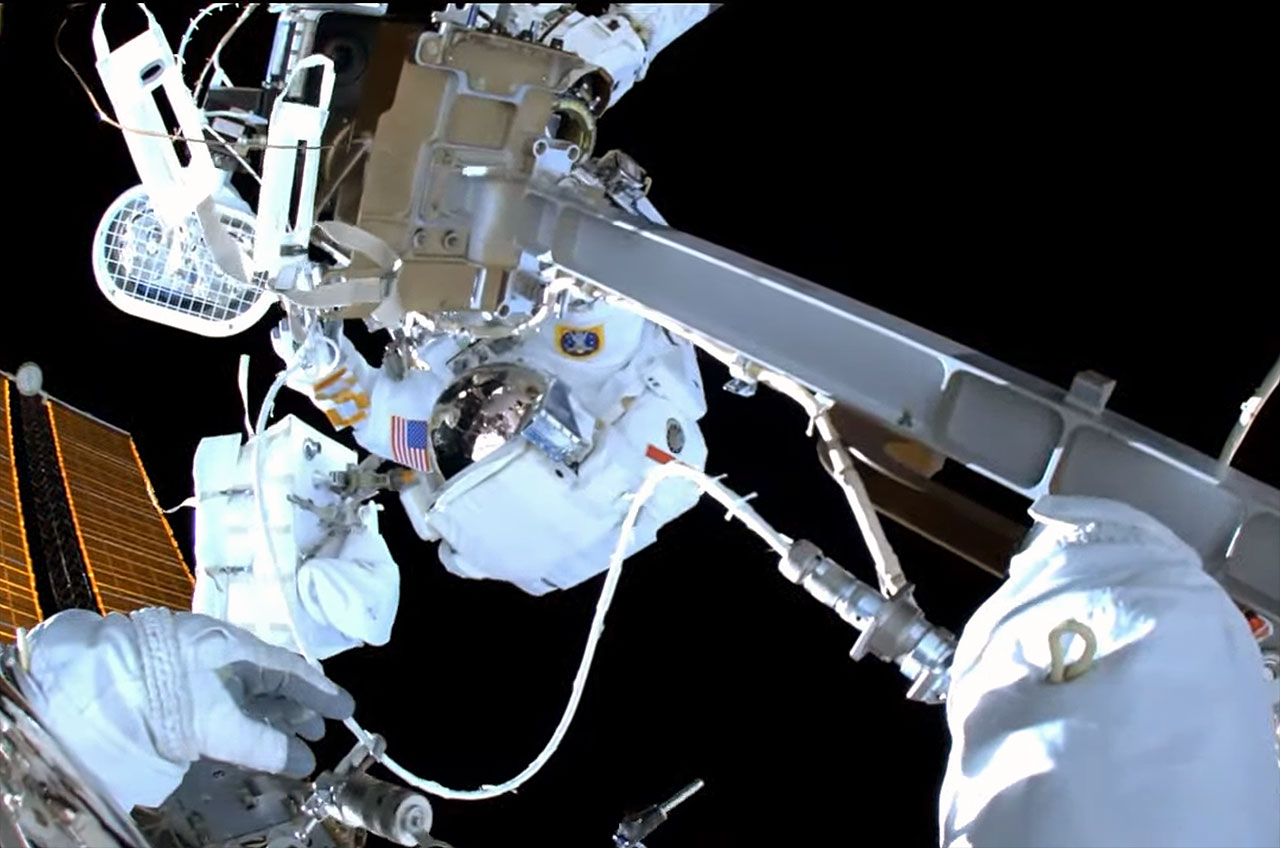Spacewalking astronauts restore radiator, replace space station camera after wardrobe malfunction
A loose helmet-mounted camera delayed the spacewalk work by an hour.
Two astronauts on a spacewalk completed several maintenance tasks outside of the International Space Station, despite getting off to a slow start due a wardrobe malfunction.
NASA astronaut Raja Chari and Matthias Maurer with the European Space Agency (ESA) spent 6 hours and 54 minutes on Wednesday (March 23) performing a number of tasks to restore and extend equipment mounted to the exterior of the space station. The extravehicular activity (EVA, or spacewalk) began at 8:32 a.m. EDT (1232 GMT) as the two Expedition 66 crewmates switched their spacesuits to internal battery power.
Chari and Maurer were originally scheduled to head off to different worksites after exiting the U.S. Quest airlock, but a difficulty in keeping Maurer's helmet-mounted video camera secure in place delayed the start of their planned activities by about an hour. Ultimately, Chari used a spare wire tie to hold down Maurer's helmet cam and associated light unit to make sure that Mission Control had a clear view of Maurer's progress during the spacewalk.
In photos: The most memorable spacewalks of all time

Once that issue was solved, Maurer headed off to route a power and data cable for a camera to be replaced later in the spacewalk, while Chari prepared to ride at the end of the Canadarm2 robotic arm, as controlled by fellow astronauts Kayla Barron and Tom Marshburn from inside the space station.
"We're excited that Raja is having a chance to fly the smooth and friendly skies of Kayla and Tom," radioed astronaut Stephanie Wilson, who served as the spacewalk coordinator from Mission Control in Houston.
"Absolutely. Way better than business class," replied Chari.
Get the Space.com Newsletter
Breaking space news, the latest updates on rocket launches, skywatching events and more!

The space station has six radiators, three on each side of its backbone truss, which are used to draw heat and keep the modules at a livable temperature. A pair of flex hoses connecting one of the port-side radiators to a valve module was leaking ammonia coolant, which led to a 2017 spacewalk to vent the hoses and remove them from use.
The leaky hoses were returned to Earth the following year, repaired and relaunched in 2019. On Wednesday, Chari reinstalled the flex hoses, restoring use of its associated radiator and completing the primary task planned for this spacewalk.
Maurer, meanwhile, finished running the power and data cable for the new camera before moving over to install a jumper on a Columbus module and release some clamps on the Bartolomeo science platform, the latter an exterior mount for science experiments that was launched and attached to the European lab in 2020.

Mission Control next directed that both spacewalkers meet at the Port 3 (P3) truss segment to work on removing and replacing the older video camera with a high definition unit and wireless communications port. Achieving the swap, Chari connected the cable earlier routed by Maurer to the back of the new camera, bringing it online.
A "ping" test showed the installation was successful.
With the old camera and other tools in tow, Chair and Maurer made their way back to airlock. The spacewalk ended at 3:26 p.m. EDT (1926 GMT) when re-pressurization of Quest began.
The EVA was the third of the year and the 248th in support of the assembly, maintenance and upgrade of the International Space Station since 1998. It was Maurer's first spacewalk and Chari's second, exactly doubling his career total time working in the vacuum of space. Chari has now logged to 13 hours and 48 minutes.
Follow us on Twitter @Spacedotcom or on Facebook.
Join our Space Forums to keep talking space on the latest missions, night sky and more! And if you have a news tip, correction or comment, let us know at: community@space.com.

Robert Pearlman is a space historian, journalist and the founder and editor of collectSPACE.com, a daily news publication and community devoted to space history with a particular focus on how and where space exploration intersects with pop culture. Pearlman is also a contributing writer for Space.com and co-author of "Space Stations: The Art, Science, and Reality of Working in Space” published by Smithsonian Books in 2018.In 2009, he was inducted into the U.S. Space Camp Hall of Fame in Huntsville, Alabama. In 2021, he was honored by the American Astronautical Society with the Ordway Award for Sustained Excellence in Spaceflight History. In 2023, the National Space Club Florida Committee recognized Pearlman with the Kolcum News and Communications Award for excellence in telling the space story along the Space Coast and throughout the world.









